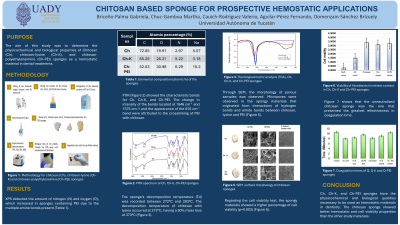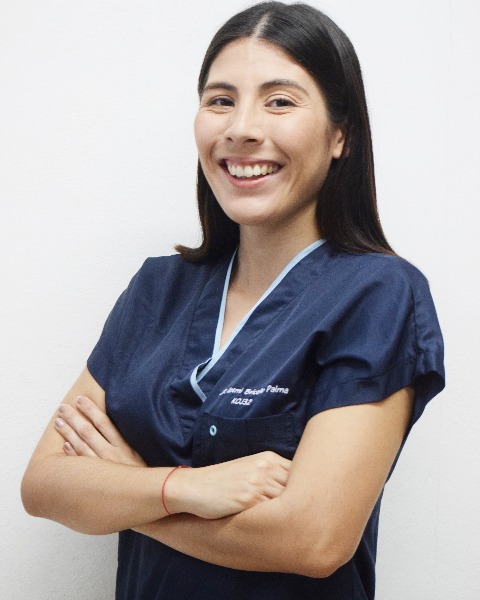Other
245 - Chitosan Based Sponges for Prospective Hemostatic Applications


Gabriela Noemi Briceño Palma, BDS
Master Degree Student
Universidad Autonoma de Yucatan
Universidad autonoma de Yucatan
Mérida, Yucatan, Mexico- JC
Juan Valerio Cauich-Rodriguez, DScD
Centro de investigación científica de Yucatán
- MC
Martha Gabriela Chuc-Gamboa, DScD
Universidad Autonoma de Yucatan
- FA
Fernando Aguilar-Pérez, DScD
Universidad Autonoma de Yucatan
- BD
Brizuely A. Domenzain-Sánchez, MSD
Universidad Autonoma de Yucatan
- JC
JUAN VALERIO CAUICH-RODRIGUEZ, n/a
Professor
CENTRO DE INVESTIGACION CIENTIFICA DE YUCATAN A.C.
MERIDA, Yucatan, Mexico - MC
Martha G. Chuc Gamboa, N/A, n/a
Professor
Universidad Autonoma de Yucatan
Merida, Yucatan, Mexico
Presenting Author(s)
Co-Author(s)
Research Mentor(s)
Program Director(s)
Purpose: The aim of this study was to determine the physicochemical and biological properties of chitosan sponges for to be used as a hemostatic material in dental treatments.
Methods: 200 mg of low molecular weight chitosan, 10 mg of lysine and 52 μl polyethylenimine with 4% acetic acid were used, which were lyophilized to obtain chitosan (Ch), chitosan-lysine (Ch-K) and chitosan-polyethylenimine (Ch-PEI) sponges and to vary their chemical and biological properties. Physicochemical characterizations were performed by thermogravimetric analysis (TGA), X-ray photoelectron spectroscopy (XPS), Fourier transform infrared spectroscopy (FTIR) and scanning electron microscopy (SEM). Biological properties were determined by cell viability and coagulation with the Lee-White method.
Results: The presence of C, N and O elements was detected by XPS. FTIR confirmed the crosslinking of chitosan with K and PEI. The decomposition temperature (Td) of the foams ranged from 272° to 283°C. By SEM, porous morphology was observed in the samples, which was favorable for cell growth. Cell viability was analyzed by ANOVA test (p < 0.001), which yielded a statistically significant value. Coagulation was also statistically evaluated using an ANOVA test, and the result was not statistically significant (p=0.062).
Conclusions: Ch, Ch-K, Ch-PEI sponges have physicochemical and biological qualities necessary to be used as hemostatic materials in dentistry. From the study materials, the chitosan sponge showed better hemostatic and cell viability properties.
Identify Supporting Agency and Grant Number:
This research project was supported by Autonomous University of Yucatan (UADY)

.jpg)